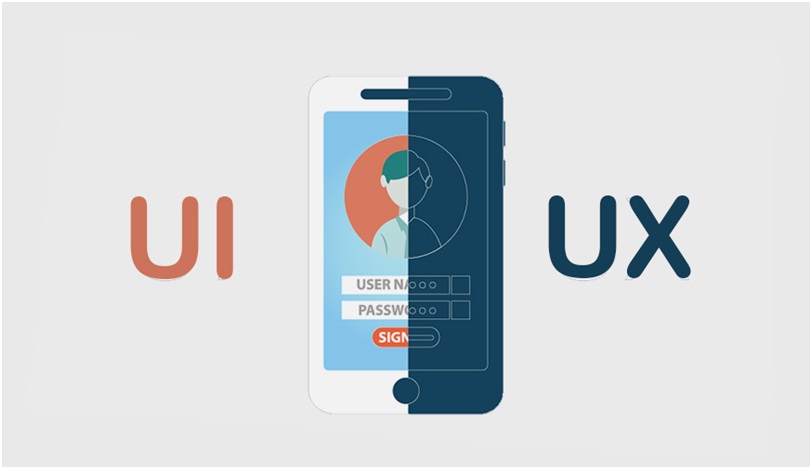Six Outstanding UI/UX Design Trends That Will Dominate 2022

People’s expectations from businesses increase with each passing year. Therefore, it has become crucial to make business changes accordingly to satisfy user expectations.
Users visit dozens of sites regularly, use mobile apps frequently, and thus observe design concepts inadvertently. So, it becomes integral for businesses to develop innovative UI/UX designs to capture customers’ attention, keeping them on their platform.
Creating a visually pleasing website or mobile app is one way to generate leads. Some trends fade away over time, while others gain traction. Therefore, businesses should stay updated to stand out from the crowd. Consequently, paying attention to user interface/user experience (UI/UX) is significant.
Six Top UI/UX Design Trends
A new list of UI/UX designs is released every year. After all, a compelling design plays a major role in leaving favourable first impressions on web and mobile users.
Indeed, the most important factors influencing user engagement with digital products are visual appeal and ease of use. Therefore, UI/UX designs are crucial for a successful online presence for brands and businesses.
With that said, let’s look at the top six UI/UX design trends that are likely to dominate 2022:
1. 3D Elements
For many years, web designers have favoured 3D. However, as Augmented Reality (AR) and Virtual Reality (VR) technology gained traction in 2021, the popularity of this trend increased. So, combining these techniques to create hyper-realistic 3D visuals in 2022 will likely improve the entire user’s screen tremendously.
The 3D trend allows UI/UX designers and businesses to enhance the look of their websites and apps. As a result, they can encourage potential users to stay longer, increasing the average landing time on their platform. In addition, such visuals entice users because they blur the lines between real life and the digital environment.
The trend in 3D elements helps with user engagement, enticing them to ‘click for more.’ So, complex 3D features allow businesses to stand out from the crowd and create distinct brand recognition.
2. Buttonless Designs
Several smartphone manufacturers are removing physical buttons from their digital devices. This may allow product designers to provide additional information or data to users.
Instead of using digital buttons to display content, in 2022, the focus will likely be on using gestures to display content. Another emerging technology, known as liquid swipe, will be widely used to enhance the influence of hand gestures.
3. Dark Mode
Dark mode has become one of the top design trends since 2021. The likes of Facebook and Instagram are trying alternative themes to make this trend even more lucrative. The dark mode comes with some perks, such as:
- The prominence of other design elements
- Cutting-edge appearance
- Reduction of eye strain in low-light situations
- Device battery power conservation (in the case of AMOLED/ OLED displays)
The dark mode is a popular trend in web development for both desktop and mobile devices. Several applications allow visitors to control when the dark mode is activated. For example, Apple users can automatically schedule times to modify device appearance. It enables them to select the ‘Sunset to Sunrise’ option or set a specific time for the transition to occur.
4. Voice User Interface (VUI)
Virtual assistance and voice chatbots have also emerged as noteworthy technology trends. It has altered how users search for information, take notes, and more. Top-notch brands, including Android, Google, Amazon, Microsoft, Apple, and Google, are implementing this feature in their UI/UX design processes.
Employing the Voice User Interface (VUI) trend in businesses has given a new face to modern web designs. It is becoming more common and ensures technology communicates with your users. While it is not a new direction, it is still a step forward in UI/UX design.
5. VR/AR & Metaverse
Augmented Reality, like VUI, is a vital part of the user experience. AR and VR are bursting into the tech world and have quickly become the norm.
These innovations have opened up new worlds for users by allowing them to interact with virtual settings in real time, and the B2B industry is no exception. Work-from-home dynamics have ensured businesses continue as usual. Thus, virtual reality office settings have emerged as an innovative trend.
The “Horizon Workrooms app” on Facebook’s Metaverse platform shows businesses have become increasingly aware of these modern working dynamics.
6. Micro-Interactions
Micro-interactions are small elements adding interest and vibrancy to user interface design concepts. These simple animated triggers can respond to user actions, enhancing their interaction with the design. For example, when users want to respond to news on Facebook or LinkedIn, they can use emoticons or the pull-to-refresh action to update the page’s content.
UI/UX designers must carefully consider each micro-interaction element when developing apps. Alternatively, they risk destroying the app’s experience, causing customers to abandon it.
In 2022, micro-interactions will likely remain significant in web and mobile app UI/UX design. Therefore, developers will have to understand how to integrate these elements into the required apps more intelligently.
What’s Next?
These are the current design trends expected to dominate UI/UX in 2022. Recent breakthroughs have changed the way users interact with and access apps and websites. To create an engaging and one-of-a-kind user interface, try selecting and combining different features.
Finally, it has also become important for web designing and computer students to learn about such innovations. It is even a good idea to take courses related to the subject, and if it becomes too much to handle with all the pending college work, they can always opt for essay help.
All in all, knowing and understanding modern technology and its trends can help students, businesses, marketers hone their skills and develop successful websites.